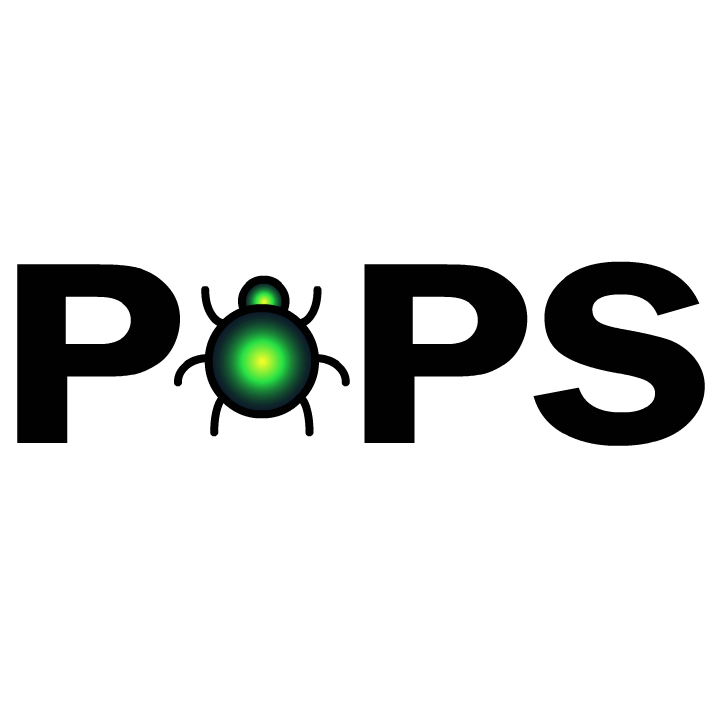This is an R package for simulating the spread of pests and pathogens. The package is an R package with multiple functions built around the PoPS (Pest or Pathogen Spread) model implemented in the C++ library maintained in the PoPS Core Repository.
PoPs is a stochastic spread model of pests and pathogens in forest and agricultural landscapes to learn more visit popsmodel.org. The R package provides an easy way for researchers to calibrate, validate, and test what if scenarios of treatment interventions. The model is also available in GRASS GIS you can install and use r.pops.spread to run the model in GRASS GIS.
If you are on Windows, you need to first install Rtools to get a C++ compiler that R can use.
If you want to install a specific version just change the version number.
install.packages("remotes")
remotes::install_github("ncsu-landscape-dynamics/rpops", ref = "v2.0.0")
library(PoPS)
install.packages("remotes")
remotes::install_github("ncsu-landscape-dynamics/rpops")
library(PoPS)
the PoPS package in R is built on top of PoPS Core C++ library includes:
- Susceptible-infected (
SI) and susceptible-exposed-infected (SEI) model types (model_type,latency_period). - Host mortality tracking (
mortality_rate,mortality_time_lag,mortality). - Host removal and pesticide application treatments (
treatments,treatment_date,pesticide_duration). - Host resistance based on pesticide application treatments (
pesticide_duration> 0). - Treatments applied only to a ratio of hosts (
treatment_application). - Yearly pest removal based on lethal temperature (
lethal_temperature,lethal_month). - Two different dispersal kernels (
natural_dispersal_kernel,anthropogenic_dispersal_kernel). - Cauchy, Exponential, Uniform, Power-law, Deterministic neighbor, Hyperbolic-Secant, Gamma, Weibull, Normal, and Logistic radial dispersal kernels use Von Mises distribution.
- Seasonal spread (
seasonalityin months). - Host movement for animals moving from farm to farm or plants via nursery trade (
use_movements,movements_file). - Reduced stochasticity options (
generate_stochasticity,establishment_stochasticity,movement_stochasticity) and deterministic versions of kernels (deterministic) other required parameters if reducing stochasticity are (dispersal_percentage,establishment_probability). - Spread rate measurement in 4 cardinal directions (
west_rate,east_rate,south_rate,north_rate) when (use_spreadrates) is true. - Distance to quarantine in 4 cardinal directions (
north_distance_to_quarantine,south_distance_to_quarantine,east_distance_to_quarantine,west_distance_to_quarantine) when (use_quarantine) is true and (quarantine_areas_file) is provided. - Probability of quarantine escape (
escape_probability). - Overpopulation function (individuals in areas of high population leave the area and disperse longer distances on average) (
use_overpopulation,overpopulation_percentage,leaving_percentage,leaving_scale_coefficient). - Flexible output frequency with n number of days, weeks, months, or years as options (
output_frequency,output_frequency_n).
calibrate:Calibration of the model parameters using either MCMC (markov chain monte carlo) or ABC (approximate bayesian computation).validate:Validation of the model using quantiy, allocation, and configuration disagreement.pops_multirun:Parallel execution of multiple stochastic runs (number_of_coresused to set cores used if left NULL defaults to using n - 1 cores on the machine). Outputs statistics of infected/infested hosts across multiple runs (simulation_mean,single_run,simulation_sd,simulation_min,simulation_max), current state using the median (infected,exposed, andsusceptible), average and standard deviations whole area statistics (number_infecteds,infected_areas), and probability of infection (probability) which is the percent of model runs that a cell has at least one infestation/infection.pops:Runs a single stochastic run of the model. This function is primarily used for automated testing of model functionality.
If you use this software or code, please cite the following papers:
- Jones, C., Jones, S., Petrasova, A., Petras, V., Gaydos, D., Skrip, M., Takeuchi, Y., Bigsby, K., and Meentemeyer, R., 2021. Iteratively forecasting biological invasions with PoPS and a little help from our friends. Frontiers in Ecology and the Environment DOI: 10.1002/fee.2357
In case you are using the automatic management feature in rpops or the steering version of r.pops.spread (from the branch steering), please cite also:
- Petrasova, A., Gaydos, D.A., Petras, V., Jones, C.M., Mitasova, H. and Meentemeyer, R.K., 2020. Geospatial simulation steering for adaptive management. Environmental Modelling & Software 133: 104801. DOI: 10.1016/j.envsoft.2020.104801
In addition to citing the above paper, we also encourage you to reference, link, and/or acknowledge specific version of the software you are using for example:
- We have used rpops R package version 1.0.0 from https://github.com/ncsu-landscape-dynamics/rpops.
Please see the pops-core repository for contributing best practices and release policies. Other than that, just open pull requests against this repo. We suggest following the Style Guide from Hadley for R code.
(alphabetical order)
- Chris Jones
- Vaclav Petras
- Anna Petrasova
(alphabetical order)
- Zexi Chen
- Devon Gaydos
- Margaret Lawrimore
- Nick Kruskamp
- Francesco Tonini
See Git commit history, GitHub insights, or CHANGELOG.md file for details about contributions.
Permission to use, copy, modify, and distribute this software and its documentation under the terms of the GNU General Public License version 2 or higher is hereby granted. No representations are made about the suitability of this software for any purpose. It is provided "as is" without express or implied warranty. See the GNU General Public License for more details.
